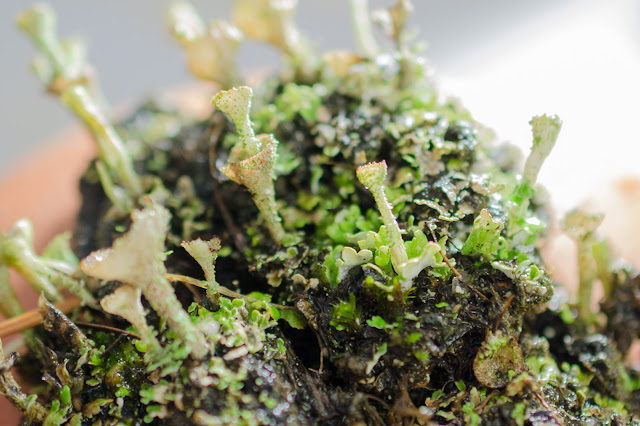And I can look at it in the light!
 |
| Cladonia pyxidata, Pebbled pixie cup, perhaps. |
From up close, I can see that the thalli (the leafy structures) are more like oddly-shaped scales, called "squamules". They grow at the base, along the stalk, and in the cup itself. (Cup and stalk together are called "podetia".) The dark brown dots along the rim of the cup are apothecia, fruiting bodies containing the spores for the next generation. The miniature squamules can also break off and sprout vegetatively; like taking a cutting from a friend's geranium and sprouting it in water for your own garden.
(Knowing the names helps me to see better. I don't know how that works, but it does.)
 |
| Podetia, stacked. This growth pattern is called "proliferating". |
 |
| More proliferating podetia. And the fat, green squamules at its base. |
 |
| Backing off. The whole mini-garden. |
Over the course of the day, as the lichen dries, the squamules shrink back, become greyish. A good soaking brings them right back; within a minute or so, they're fat and green again.
And now, as soon as the rains come back and the snow melts, I think I'll go and collect more species; there's a nice patch of reindeer lichen half a block from my door.

this is awesome. What I cannot figure, and what is so amazing, is how there is enough foundation for the complete nutrient cycle to happen. I love the awesomeness of nature you bring to us. Pixie cups are some of my favorite
ReplyDeleteThat may be why they grow so slowly.
ReplyDelete